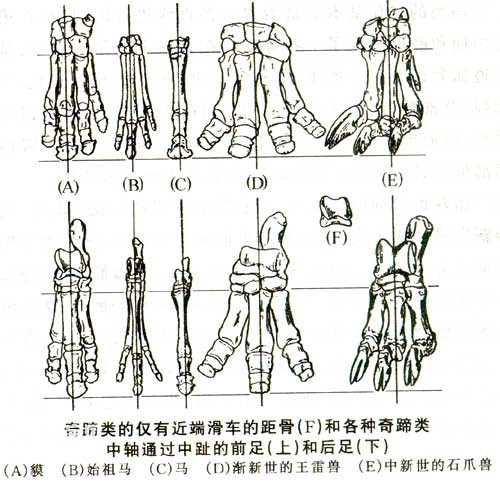In the North American continent during the early Eocene 50 million years ago, a fox-sized herbivore emerged from the primitive arthropods. It was called Eohorse. In fact, it was not only the ancestor of modern horses, but also It is the earliest type of the entire group of odd-dactyl animals that are closely related to horses. Since then, modern ungulates have begun to appear on the stage of history.

Foot bones of various odd-dactyloids
Perissodactyls often have an odd number of toes, and the central axis of the foot passes through the middle toe. The inner toe (the big toe) of the front and rear feet and the fifth toe of the rear foot have degenerated and disappeared; the fifth toe of the forefoot is retained in the primitive type and also disappeared in the progressive type. Therefore, the front and rear feet of perissodactyls often have only three functional toes, while in advanced modern horses only one middle toe remains. In the ankle of odd-dactyls, the proximal end of the talus (that is, the end closer to the body) has a double-protruded trochlear surface, which is articulated with the distal end of the tibia (that is, the end farther from the body). The end where it meets other bones of the ankle is a flat surface. The functional digits are concentrated on a few or even one toe, and the talus has a pulley structure. These two points allow perissodactyls to run faster to escape dangerous predators. This is an important reason why perissodactyls surpass and anklets. Progressive features. In addition, the perissodactyl femur has a significant protrusion on the outside of the shaft, called the third trochanter.
During the evolution of Perissodactyla, the tooth crowns gradually increased, and the premolars tended to become molars. This was an adaptation to eating fibrous hard grass and hay in arid grassland life.
animal tags: Fox Archaeus Horse Perissodactyla
We created this article in conjunction with AI technology, then made sure it was fact-checked and edited by a Animals Top editor.